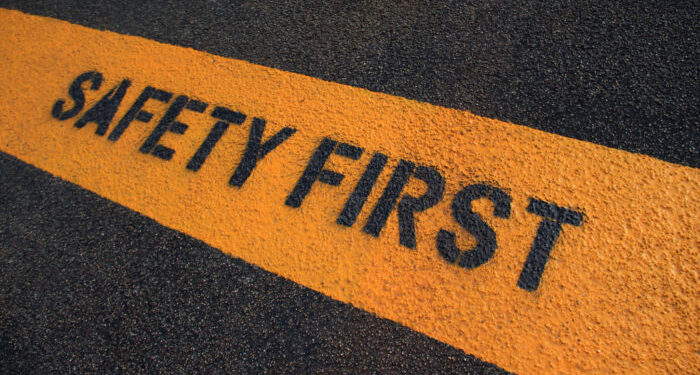Bureau of Safety and Environmental Enforcement (BSEE) field personnel have indicated a need for increased operator awareness when using temporary equipment (TE).
Some TE may be a potential ignition source and can range from small items such as portable welding sets to large skid-mounted packages. Recent examples of unsafe (potential ignition sources) use of TE include:
- An incident of noncompliance (INC) was reported on a portable air compressor powered by a diesel engine not rated for a hazardous area. It was running in the Class 1, Division 2 area next to an in-line heater treater. The heater was in service and treating hydrocarbons. The air compressor had the potential to ignite the hydrocarbons if an incident (a leak) was to occur.
- A diesel engine-driven power pack (hydraulic supply) was used to operate the temporary power tongs. The power pack was in a hazardous classified area above the shakers and within 10 feet of the drilling fluid return flowline. The shale shakers and drilling fluid return flowline had the potential to contain and release flammable gases and vapors.
- A portable fan was not rated for use in the Class 1, Division 2 area. It was operating next to the sand trap tank located under the gas buster and adjacent to the mud tank. The fan was connected to a power source with a non-explosionproof extension cord.
Recommendations
TE should be held to the same standards as the permanent equipment it is replacing or supporting. When using TE, ensure that ignition sources are identified and controlled using proper hazard analysis, ignition prevention devices and/or Emergency Shutdown System (ESD). BSEE stresses, as a minimum, the following preventive measures be considered:
- Inspecting and reviewing maintenance records and certificates of TE before it arrives at the facility. TE rated for use in hazardous classified areas may be unsafe if enclosures are damaged or wiring is exposed, damaged, or improperly modified.
- Requesting approval from BSEE for installation and use of TE on production platforms that handle hydrocarbons or other Class 1 gases or vapors. Seek further clarification from BSEE if any TE may affect BSEE-approved drawings in accordance with 30 CFR 250.867 “Temporary Quarters and Temporary Equipment.”
- Ensuring your Safety and Environmental Management System program addresses TE requirements and safely returns to normal operation following the removal of the TE.
- In accordance with 30 CFR 250.1917, conducting a Pre-Startup Safety Review 3 before TE is implemented to prevent unforeseen hazards from causing a significant safety incident.
- In accordance with 30 CFR 250.1912, ensuring personnel follow the company’s Management of Change4 policy and procedures before installing and operating TE on the facility.
- Before introducing and installing TE to the facility, completing and documenting a risk assessment of all the equipment involved (permanent and TE). Implement mitigation of potential hazards resulting from the TE’s addition, use, failure, and removal.
- Establishing safety guidelines, procedures, and training addressing the TE (e.g., new gas detectors, updated alarm and ESD logic diagrams, additional means of firefighting, etc.)
- Ensuring the potential impacts of the TE’s installation on existing safety systems and barriers are identified, publicized, and coordinated, and area classification drawings, egress routes, etc. are updated.
- Updating existing engineering drawings and documents to reflect all operational changes and informing all appropriate personnel.
- Ensuring policies and procedures include requirements for installation, training, removal, testing, maintenance, and hazard control using the TE.
- Ensuring responsibilities are assigned to individuals with clearly defined lines of communication between various parties (e.g., operator and contractors).






























































